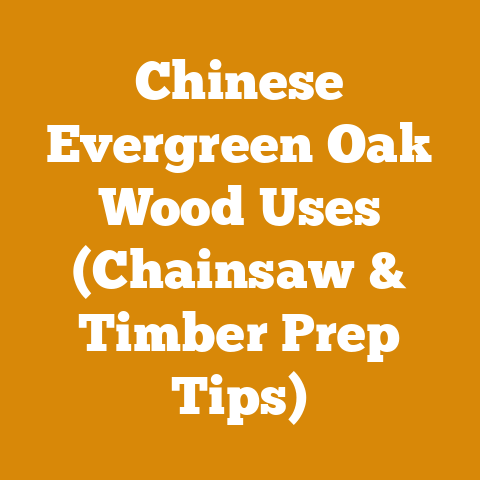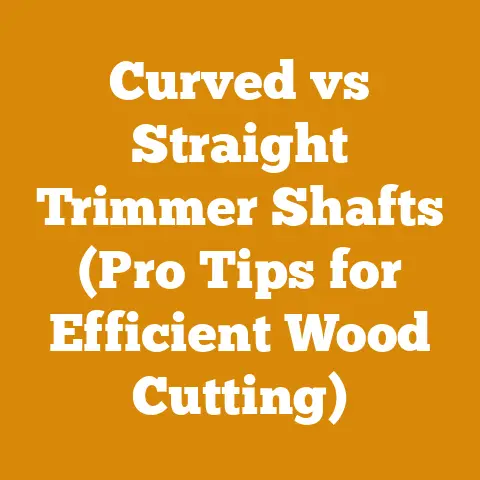How Much to Rent a Mulcher: Hire Pros or DIY Mulching? (Expert Tips)
In our increasingly interconnected world, even tasks like yard maintenance and wood processing are getting a smart upgrade. Just as we automate our homes with intelligent devices, we’re finding smarter ways to tackle the outdoors. And that brings us to a question many homeowners and even seasoned landscapers face: How much does it really cost to rent a mulcher, and is it better to hire a pro or DIY? Let’s dive in.
Mulcher Rental: DIY vs. Hiring a Pro
Mulching is more than just making your garden look neat. It helps retain moisture, suppresses weeds, and enriches the soil as it decomposes. But the big question is: should you rent a mulcher and tackle the job yourself, or hire a professional to handle it? I’ve been around wood processing long enough to know there’s no one-size-fits-all answer. Let’s break down the costs, benefits, and considerations to help you make the best choice.
Understanding Your Mulching Needs
Before even thinking about costs, it’s crucial to understand the scope of your mulching project.
- Garden Size: A small flower bed requires far less mulch than a sprawling landscape.
- Type of Material: Are you mulching with wood chips, bark, leaves, or something else?
- Mulch Depth: How thick do you want the mulch layer to be? Typically, 2-4 inches is recommended for most applications.
- Accessibility: Can you easily get a mulcher to the areas you need to cover?
- Material Availability: Do you have your own wood to chip, or will you need to purchase mulch?
I once underestimated the amount of mulch needed for a large community garden project. What I thought would take a day turned into a three-day marathon. Accurate planning is key.
Mulcher Rental Costs: A Detailed Breakdown
Renting a mulcher can seem straightforward, but several factors influence the final cost. Here’s what to consider:
- Type of Mulcher:
- Electric Mulchers: Suitable for small yards and light-duty tasks. They’re usually the cheapest to rent, ranging from $30-$50 per day.
- Gas-Powered Chippers/Shredders: Better for larger volumes of branches and thicker materials. Rental costs typically range from $75-$150 per day.
- Commercial-Grade Mulchers: These are beasts, capable of handling significant volumes of wood. Expect to pay $200-$500+ per day.
- Rental Duration: Most rental companies offer hourly, daily, weekly, and monthly rates. Longer rental periods often come with discounted rates.
- Location: Rental prices vary depending on your geographic location and the availability of equipment.
- Additional Fees:
- Delivery and Pickup: If you don’t have a truck, you’ll need to pay for delivery and pickup. This can add $50-$150 to your total cost.
- Fuel: Gas-powered mulchers require fuel, which is an additional expense.
- Insurance: Some rental companies require you to purchase insurance coverage for the equipment.
- Cleaning Fees: Returning the mulcher dirty can result in extra charges.
I remember renting a gas-powered chipper for a weekend and forgetting to factor in the cost of fuel. I ended up spending an extra $50 on gasoline, which significantly increased the overall cost. Always read the fine print and ask about all potential fees.
The Cost of Hiring a Professional Mulching Service
Hiring a professional mulching service offers convenience, but it comes at a price. Here’s what to expect:
- Labor Costs: This is the most significant expense. Labor rates vary depending on your location and the complexity of the job, but typically range from $50-$100 per hour per person.
- Material Costs: If you need the professionals to supply the mulch, you’ll pay for the material itself. Mulch prices vary depending on the type and quantity, but expect to pay $30-$80 per cubic yard.
- Equipment Costs: Professional services factor in the cost of their equipment, including mulchers, trucks, and other tools.
- Travel Fees: Some companies charge a travel fee, especially if you’re located outside their primary service area.
- Minimum Charges: Many services have a minimum charge, regardless of how small the job is.
I once got a quote to mulch a large area around my property, and the initial estimate seemed reasonable. However, the final bill included several unexpected charges, like a “site preparation” fee and a “waste disposal” fee. Always get a detailed, itemized quote before hiring anyone.
Comparing DIY Mulching vs. Hiring a Pro: A Cost Analysis
Let’s compare the costs of DIY mulching and hiring a pro using a hypothetical scenario:
Scenario: You need to mulch a garden bed that’s 10 feet wide and 20 feet long (200 square feet) with a 3-inch layer of mulch.
DIY Mulching:
- Mulcher Rental (Gas-Powered): $100 per day
- Mulch (3 cubic yards): $150 (assuming $50 per cubic yard)
- Fuel: $20
- Delivery (Mulch): $50
- Total DIY Cost: $320
Hiring a Professional:
- Labor (4 hours at $75/hour): $300
- Mulch (3 cubic yards): $240 (assuming $80 per cubic yard, including delivery)
- Total Professional Cost: $540
In this scenario, DIY mulching is cheaper by $220. However, this doesn’t account for your time and effort. If your time is valuable, the convenience of hiring a pro might be worth the extra cost.
Factors Beyond Cost: Time, Effort, and Skill
Cost isn’t the only factor to consider. Think about:
- Time Commitment: DIY mulching can take a significant amount of time, especially if you’re unfamiliar with the equipment.
- Physical Effort: Operating a mulcher and spreading mulch is physically demanding.
- Skill Level: Using a mulcher safely requires some skill and experience.
- Disposal of Debris: If you’re chipping branches and other debris, you’ll need to dispose of the resulting mulch.
- Storage: If you buy mulch in bulk, you’ll need a place to store it.
I once spent an entire weekend mulching my yard, only to realize I hadn’t properly prepared the soil. The mulch ended up being less effective, and I had to redo the job a few weeks later. Sometimes, the expertise of a professional is worth the investment.
Safety Considerations When Using a Mulcher
Mulchers are powerful machines that can cause serious injuries if not used properly. Here are some essential safety tips:
- Read the Manual: Always read and understand the manufacturer’s instructions before operating a mulcher.
- Wear Protective Gear: Wear safety glasses, hearing protection, gloves, and sturdy shoes.
- Keep a Safe Distance: Keep children and pets away from the work area.
- Never Reach into the Hopper: Use a stick or other tool to push material into the mulcher.
- Turn Off the Mulcher: Always turn off the mulcher and disconnect the power source before performing maintenance or clearing jams.
- Be Aware of Your Surroundings: Watch out for overhead power lines and other hazards.
I know a guy who lost a finger while trying to clear a jam in a mulcher without turning it off. It’s a painful reminder that safety should always be your top priority.
Choosing the Right Mulcher for Your Project
Selecting the right mulcher is crucial for efficiency and safety. Here’s a breakdown of the different types:
- Electric Mulchers: Ideal for small yards and light-duty tasks. They’re quiet, lightweight, and easy to operate. However, they lack the power to handle thick branches or large volumes of material.
- Best For: Small gardens, leaves, and thin branches.
- Power: Typically 1-2 horsepower.
- Chipper Capacity: Up to 1.5 inches in diameter.
- Gas-Powered Chippers/Shredders: More powerful than electric mulchers, suitable for larger yards and thicker materials. They’re portable and can handle a wider range of debris.
- Best For: Medium to large yards, branches up to 3 inches in diameter, and general yard cleanup.
- Power: Typically 5-10 horsepower.
- Chipper Capacity: Up to 3 inches in diameter.
- Commercial-Grade Mulchers: Designed for heavy-duty use, capable of handling large volumes of wood and thick branches. They’re expensive to rent and require some experience to operate.
- Best For: Large properties, clearing land, and processing significant amounts of wood.
- Power: 20+ horsepower.
- Chipper Capacity: 4+ inches in diameter.
When choosing a mulcher, consider the size and type of material you’ll be processing, as well as your budget and experience level.
Preparing Your Yard for Mulching
Proper preparation is key to a successful mulching project. Here’s what to do:
- Clear the Area: Remove any debris, rocks, and weeds from the area you’ll be mulching.
- Level the Ground: Rake the soil to create a smooth, even surface.
- Water the Soil: Moisten the soil before applying mulch to help it retain moisture.
- Edge the Beds: Create a defined edge around your garden beds to contain the mulch.
- Consider Weed Barrier: If you’re dealing with persistent weeds, consider installing a weed barrier fabric before mulching.
I once skipped the step of leveling the ground before mulching, and the result was a lumpy, uneven mess. Taking the time to prepare properly will save you time and effort in the long run.
Types of Mulch and Their Benefits
Choosing the right type of mulch is essential for achieving the desired results. Here’s a rundown of some popular options:
- Wood Chips: A common and affordable option, wood chips are great for suppressing weeds and retaining moisture. They decompose slowly, providing long-lasting benefits.
- Best For: General garden use, pathways, and erosion control.
- Cost: $20-$50 per cubic yard.
- Bark Mulch: Available in various sizes and textures, bark mulch is aesthetically pleasing and helps improve soil structure. It also decomposes slowly, adding nutrients to the soil.
- Best For: Flower beds, shrubbery, and decorative landscaping.
- Cost: $30-$80 per cubic yard.
- Straw Mulch: An excellent option for vegetable gardens, straw mulch helps retain moisture, suppress weeds, and keep the soil cool. It decomposes relatively quickly, adding organic matter to the soil.
- Best For: Vegetable gardens, berry patches, and newly seeded lawns.
- Cost: $10-$20 per bale.
- Leaf Mulch: A free and readily available option, leaf mulch is a great way to recycle fallen leaves and improve soil health. It decomposes quickly, adding valuable nutrients to the soil.
- Best For: Vegetable gardens, flower beds, and composting.
- Cost: Free (if you have your own leaves).
- Pine Needles: A popular choice in acidic soils, pine needles help retain moisture, suppress weeds, and add acidity to the soil. They decompose slowly, providing long-lasting benefits.
- Best For: Acid-loving plants like azaleas, rhododendrons, and blueberries.
- Cost: $20-$40 per bale.
- Rock Mulch: A durable and low-maintenance option, rock mulch is great for areas with poor drainage or where you want to prevent erosion. It doesn’t decompose, so it won’t add nutrients to the soil.
- Best For: Dry landscapes, rock gardens, and areas with poor drainage.
- Cost: $50-$150 per cubic yard.
I once used the wrong type of mulch around my azaleas, and they started to turn yellow. It turned out the mulch was too alkaline and was affecting the soil pH. Choosing the right mulch for your plants is crucial for their health and well-being.
Applying Mulch: Best Practices
Applying mulch correctly is just as important as choosing the right type. Here are some tips:
- Apply the Right Depth: Aim for a 2-4 inch layer of mulch. Too little mulch won’t provide adequate weed control, while too much mulch can suffocate plants.
- Keep Mulch Away from Stems: Leave a few inches of space between the mulch and the stems of plants to prevent rot.
- Water After Mulching: Water the area thoroughly after applying mulch to help it settle and retain moisture.
- Replenish as Needed: Mulch decomposes over time, so replenish it as needed to maintain the desired depth and benefits.
I’ve seen people pile mulch directly against the trunks of trees, which can lead to serious problems like root rot and pest infestations. Remember to give your plants some breathing room.
Mulching for Weed Control
Mulch is an effective tool for weed control, but it’s not a silver bullet. Here are some tips for maximizing its effectiveness:
- Start Clean: Remove all existing weeds before applying mulch.
- Use a Weed Barrier: Consider installing a weed barrier fabric under the mulch to prevent weeds from growing up from the soil.
- Apply Mulch Thickly: A thicker layer of mulch will provide better weed control.
- Monitor Regularly: Check the area regularly for weeds and remove them promptly.
- Consider Herbicides: If you’re dealing with persistent weeds, consider using a pre-emergent herbicide before mulching.
I once battled a patch of bindweed that was determined to grow through my mulch. I ended up having to pull it out by hand, which was a tedious and time-consuming process. A combination of mulch and diligent weeding is the best approach.
Troubleshooting Common Mulching Problems
Even with careful planning and execution, problems can arise. Here are some common issues and how to address them:
- Mold Growth: If you notice mold growing on your mulch, it’s usually a sign of excessive moisture. Rake the mulch to improve air circulation and consider using a different type of mulch.
- Slugs and Snails: Mulch can provide a hiding place for slugs and snails. Use slug bait or traps to control these pests.
- Weed Growth: If weeds are growing through your mulch, you may need to apply a thicker layer or use a pre-emergent herbicide.
- Compacted Mulch: Over time, mulch can become compacted, reducing its effectiveness. Rake the mulch to loosen it up and improve air circulation.
- Foul Odor: A foul odor can indicate that the mulch is decomposing anaerobically. This is usually caused by excessive moisture and poor air circulation. Remove the affected mulch and replace it with fresh material.
I once had a batch of mulch that started to smell like ammonia. It turned out it was contaminated with animal waste. I had to remove it all and replace it with fresh mulch. Always source your mulch from a reputable supplier.
Environmentally Friendly Mulching Practices
Mulching can be an environmentally friendly practice if done correctly. Here are some tips:
- Use Recycled Materials: Choose mulch made from recycled materials, such as wood chips, bark, or leaves.
- Avoid Dyed Mulch: Dyed mulch can contain harmful chemicals that can leach into the soil.
- Compost Your Own Leaves: Compost your own leaves to create a free and sustainable source of mulch.
- Source Locally: Source your mulch from local suppliers to reduce transportation costs and emissions.
- Avoid Peat Moss: Peat moss is a non-renewable resource that is harvested from environmentally sensitive areas.
I’ve been composting my own leaves for years, and it’s a great way to reduce waste and create a valuable soil amendment. It’s also a lot cheaper than buying mulch.
Mulching for Different Seasons
Mulching is beneficial year-round, but the timing and techniques may vary depending on the season:
- Spring: Apply mulch in the spring to suppress weeds, retain moisture, and warm the soil.
- Summer: Mulch helps keep the soil cool and moist during the hot summer months.
- Fall: Apply a thick layer of mulch in the fall to protect plants from winter cold and prevent soil erosion.
- Winter: Mulch helps insulate the soil and prevent freeze-thaw cycles that can damage plant roots.
I always add an extra layer of mulch in the fall to protect my plants from the harsh winter weather. It’s like giving them a warm blanket for the winter.
Advanced Mulching Techniques
Once you’ve mastered the basics, you can explore some advanced mulching techniques:
- Sheet Mulching: A no-dig gardening method that involves layering cardboard, compost, and mulch to create a new garden bed.
- Hugelkultur: A raised garden bed constructed from logs, branches, and other organic materials.
- Lasagna Gardening: A similar method to sheet mulching, but using different layers of organic materials.
- Mycorrhizal Inoculation: Adding mycorrhizal fungi to the soil to improve plant health and nutrient uptake.
I’ve experimented with sheet mulching in my own garden, and it’s a great way to convert a weedy area into a productive garden bed without tilling.
The Future of Mulching
As technology advances, we can expect to see new and innovative mulching techniques emerge. Here are some trends to watch:
- Smart Mulch: Mulch that contains sensors to monitor soil moisture, temperature, and nutrient levels.
- Biodegradable Mulch Films: Mulch films made from biodegradable materials that break down in the soil.
- Drone-Based Mulching: Using drones to apply mulch to large or inaccessible areas.
- Precision Mulching: Using GPS and other technologies to apply mulch with pinpoint accuracy.
The future of mulching is exciting, and I’m looking forward to seeing how these new technologies will transform the way we care for our gardens and landscapes.
Expert Tips for Successful Mulching
Here are some final tips from my years of experience:
Making the Final Decision: DIY or Hire a Pro?
So, after all this information, how do you decide? Here’s a quick checklist:
- Project Size: Small? DIY might be best. Large? Consider a pro.
- Budget: Tight? DIY. More flexible? Get quotes from professionals.
- Time: Limited? Hire a pro. Plenty of time? DIY.
- Physical Ability: Able to handle physical labor? DIY. Not so much? Hire a pro.
- Equipment Access: Can you transport a mulcher? If not, factor in delivery costs.
- Safety Comfort: Comfortable using power equipment? If not, hire someone who is.
Ultimately, the best choice depends on your individual circumstances. Weigh the pros and cons carefully, and choose the option that makes the most sense for you.






